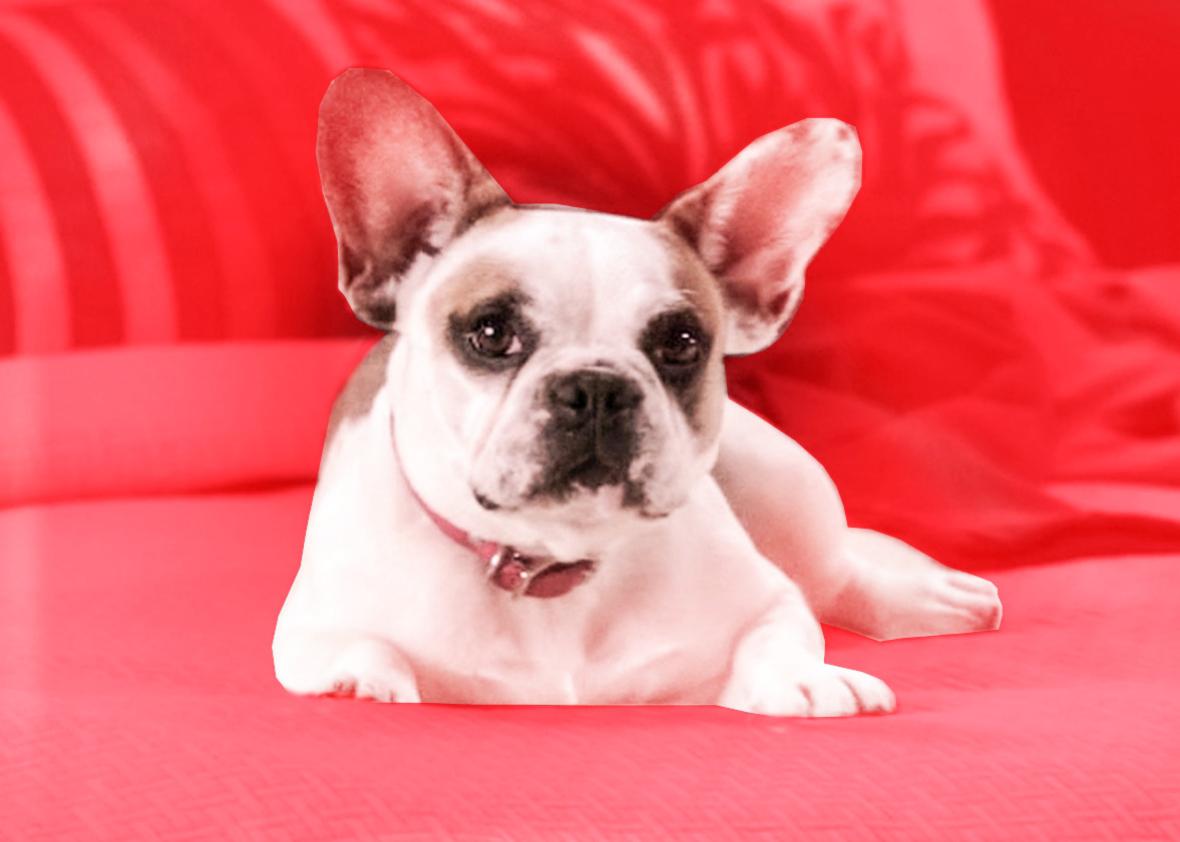Look around at the pets that populate the current TV landscape, and you’ll see some seriously standard hounds. There’s Mrs. Voorhees’ purse dog in Unbreakable Kimmy Schmidt, tasked with little more than looking cute. There’s Chuck’s post-breakup companion dog, Monkey, in Gossip Girl, who is a pretty average dog, apart from supposedly being trained to destroy fake Prada duds. There’s Stella the French bulldog on Modern Family, whose most (in)famous trick is plopping into the family swimming pool. These dogs don’t blow out candles, communicate complex messages to their human companions, or fetch and carry rabbits in their mouths. Like human actors, their role is simply to make scripted actions look natural and real.
This is a far cry from the Hollywood canines of yore. In the first half of the twentieth century, Rin Tin Tin made a name for himself in movies and radio decades even before his show debuted. This canine character’s tricks could sometimes be so dangerous that Jack Warner reportedly said he had a “kennel full of doubles.” And then Lassie arrived on the scene in the 1950s, with uncanny communication (and jumping) skills that would save Timmy and others from countless dicey situations.
From the 1970s to the 1990s, the highly-trained family dog gave way to feisty, anthropomorphized domestic pets. Consider Comet on Full House, who briefly ran away and fell in love with a street collie. He also had some gimmicks of his own—blowing out birthday candles and eating important wedding-related notes among them. Then there was Eddie on Frasier, whose notable trait was that poignant, soul-piercing stare.
But you won’t see today’s pooches performing circus-like stunts or preternaturally communicating with humans. (Except, of course, on more imaginative kids’ shows like Dog With a Blog.) Instead, these pups are more similar to our furry friends at home—they eat things they shouldn’t, are fascinated with our shoes, and jump in the pool at the most inopportune moments. So what’s behind the evolution in TV dogs, from Rin Tin Tin and Lassie til today?
Diane Katz, coordinator at Dawn Animal Agency, which has represented several TV dogs, including Elizabeth Taylor on Sex and the City, explained that as TV shows have changed in style to favor realism, so, too, have the parts offered to dogs. There’s no shortage of pet roles—in fact, the industry is booming. But hokier shows like Lassie were “just a different style,” Katz says.
In the mid-’90s, when TV “took more of a reality turn,” in the words of Steve Solomon, animal trainer and owner at Good Dog Animals, dogs began to get animals written more like characters, and less like walking gimmicks. Cathryn Long, who works with All Creatures Great and Small, an animal talent agency, said that over the past few decades, shows have started focusing more on making dogs seem like part of the family—“a more natural element, versus a starring key character who does all these tricks.”
Even the weirdest recent canine role on television, Spin City’s lascivious, suicidal Rags, required its actor, Wesley, to mostly just be himself. “When they called us, they had looked around, gone to agency after agency looking for just the right dog, and nobody could deliver,” Long recalled. “They said, ‘We want an old, decrepit dog that does absolutely nothing.’ Amazingly enough, this woman had just listed her dog with our agency days or weeks beforehand [and it] could barely even sit. Barely.” Solomon’s agency handles the canine actress who plays Stella on Modern Family. (Her real name is Beatrice.) As for dog choreography, Solomon said, “she might get into the mischief of eating the cake, or swimming in the pool.”
Gilmore Girls’ Paul Anka is scared of certain ordinary household items, organizes shoes, refuses to eat while being watched, and doesn’t like seeing his leash being put on. His only unusual talent—somehow getting through locked doors—occurs off-screen, leaving the mystery of how he does it intact. Mostly, his job description is simply to hang out. “We get that a lot now,” Long said: “‘We just want a dog being a dog.’ ”
